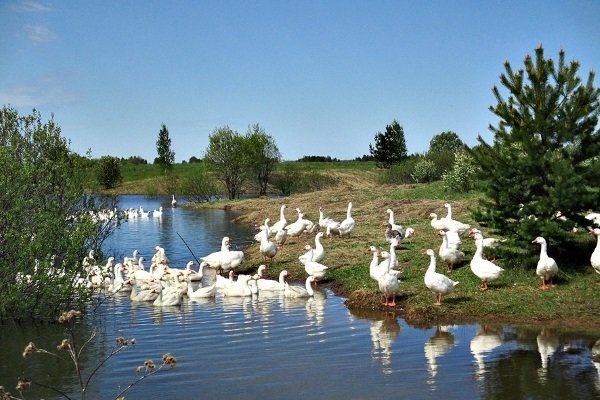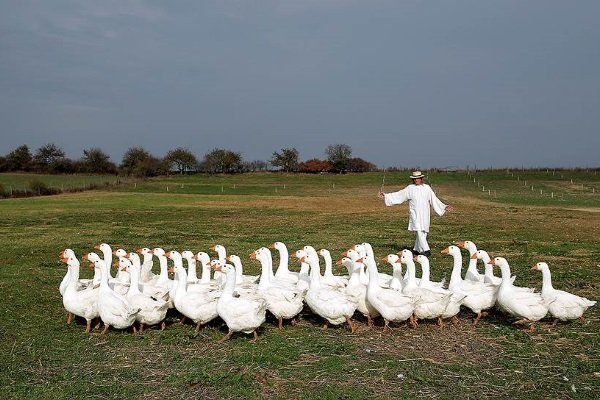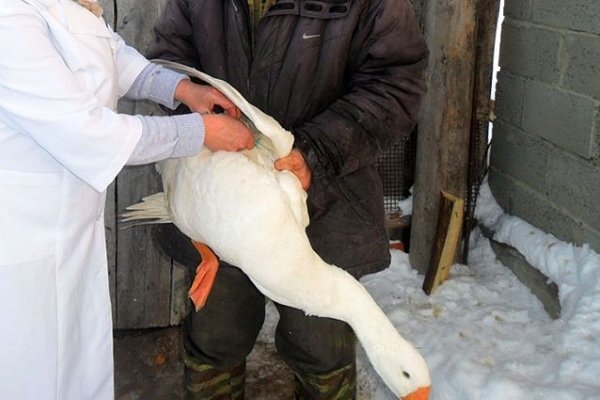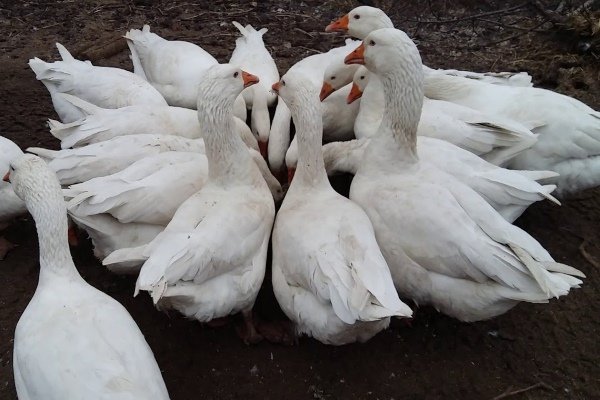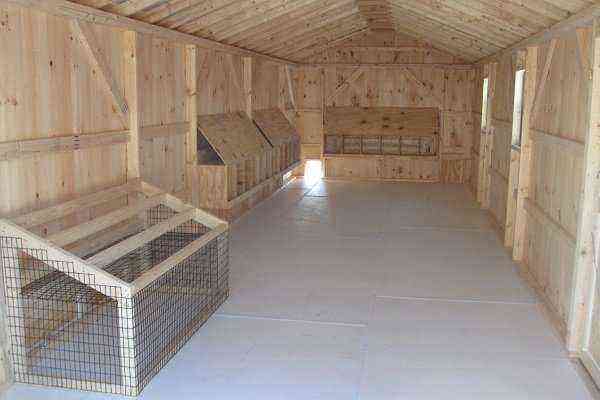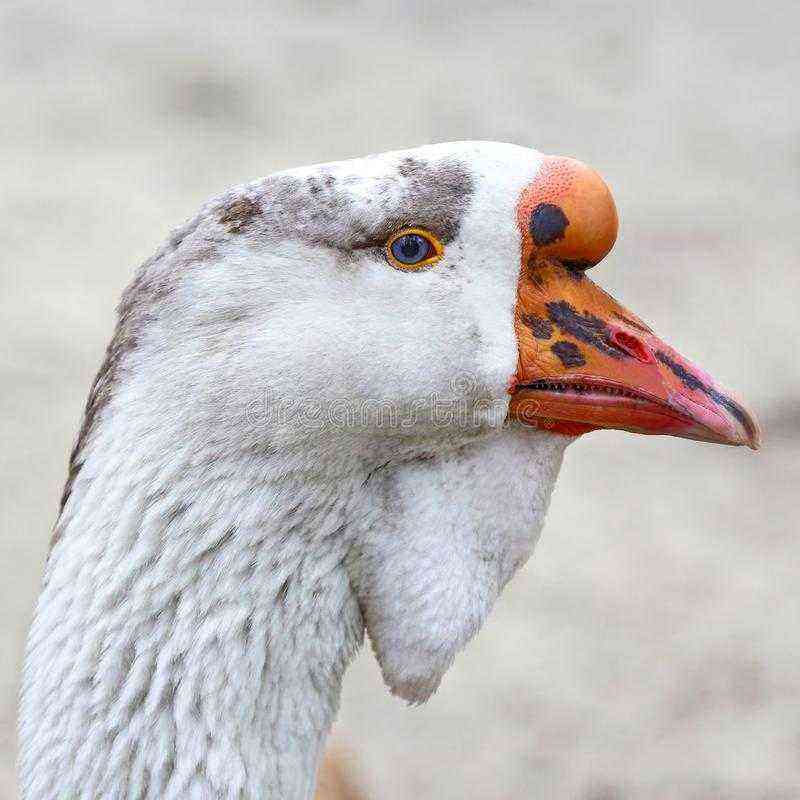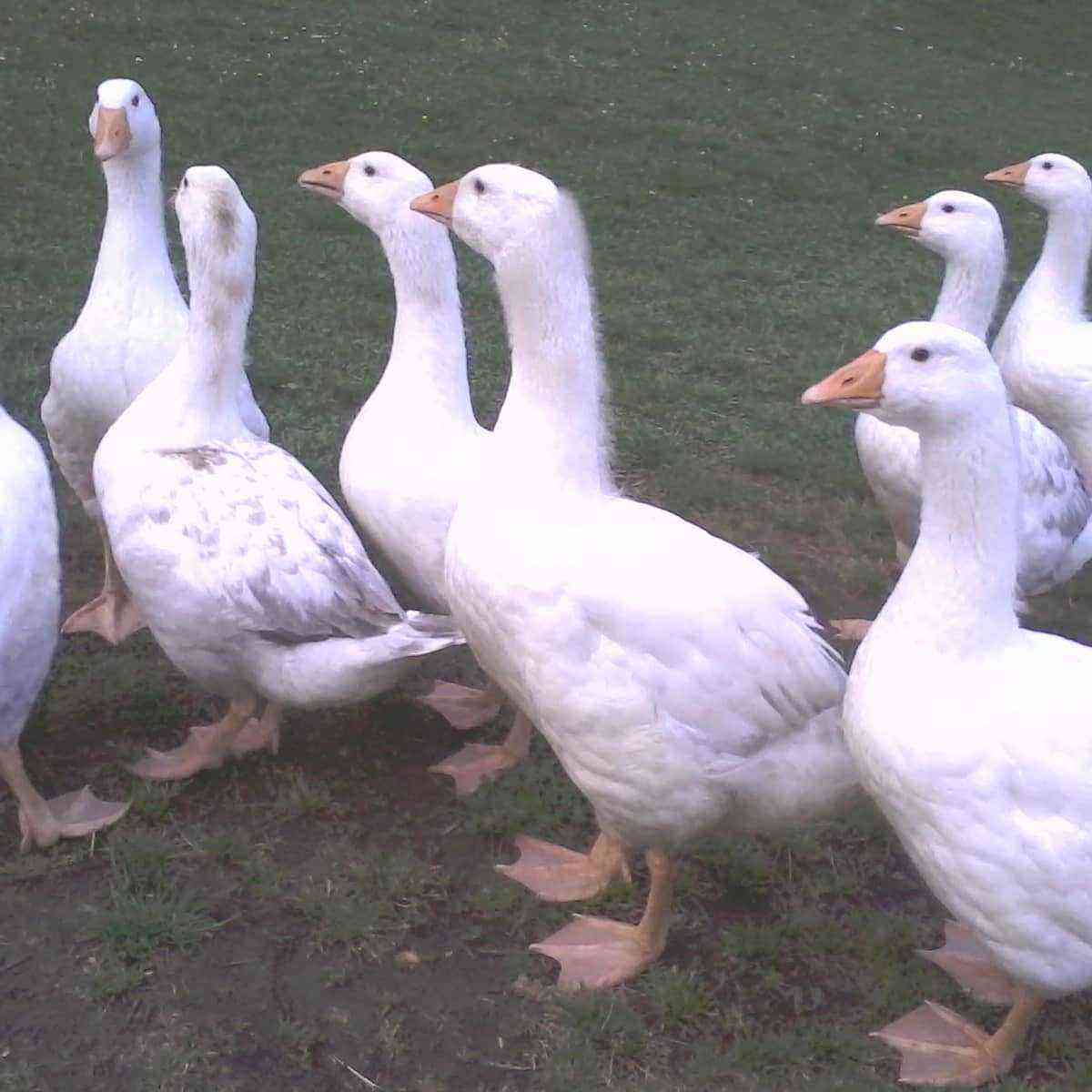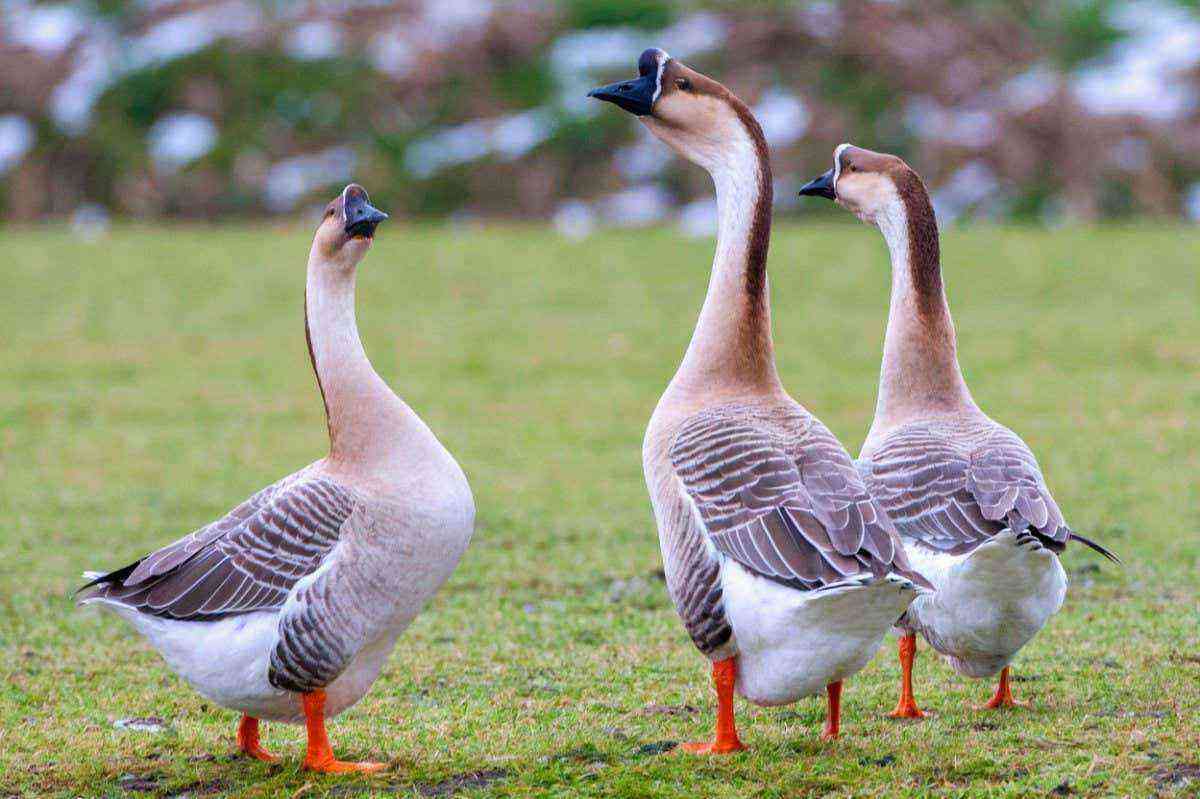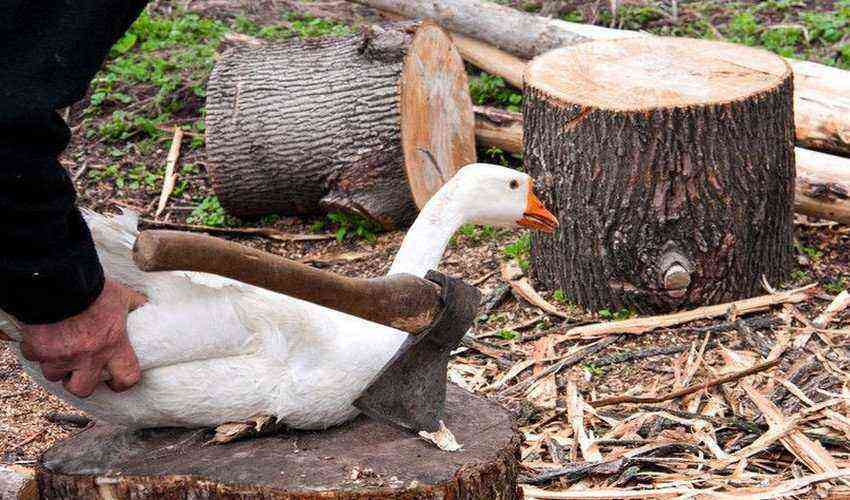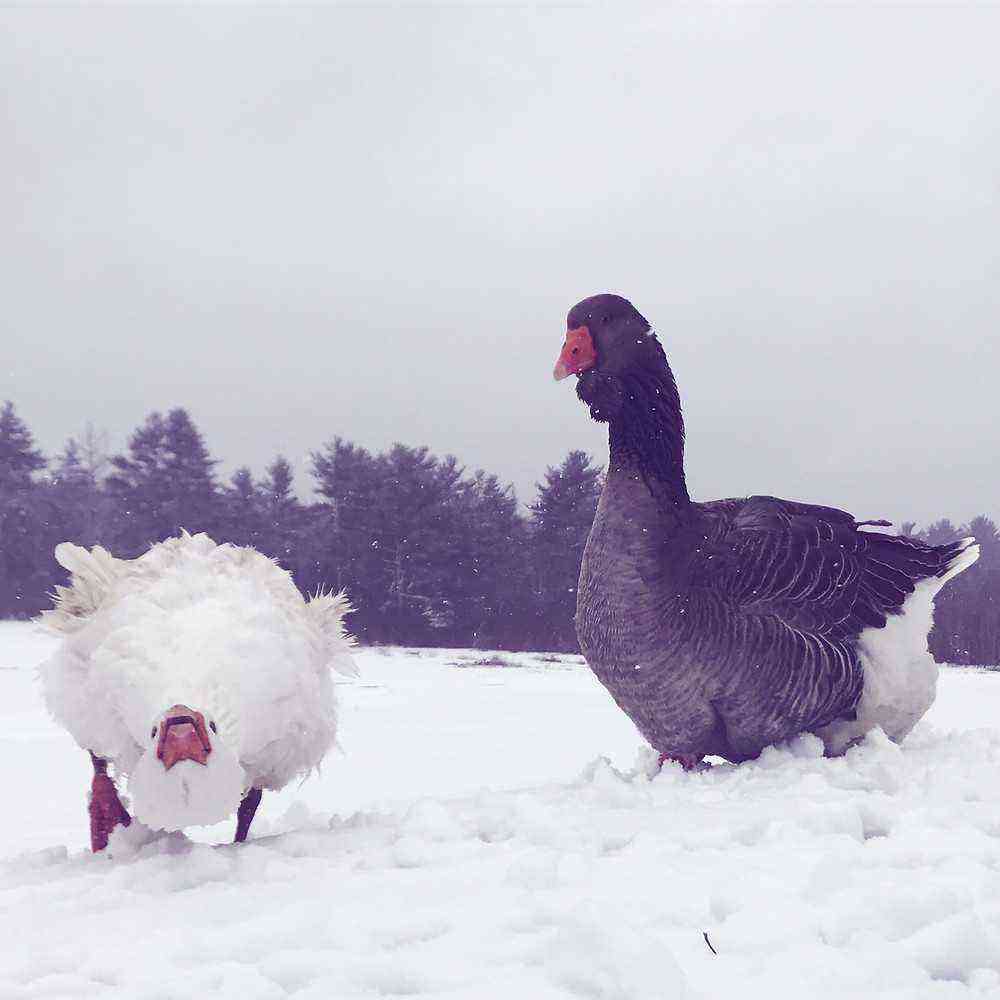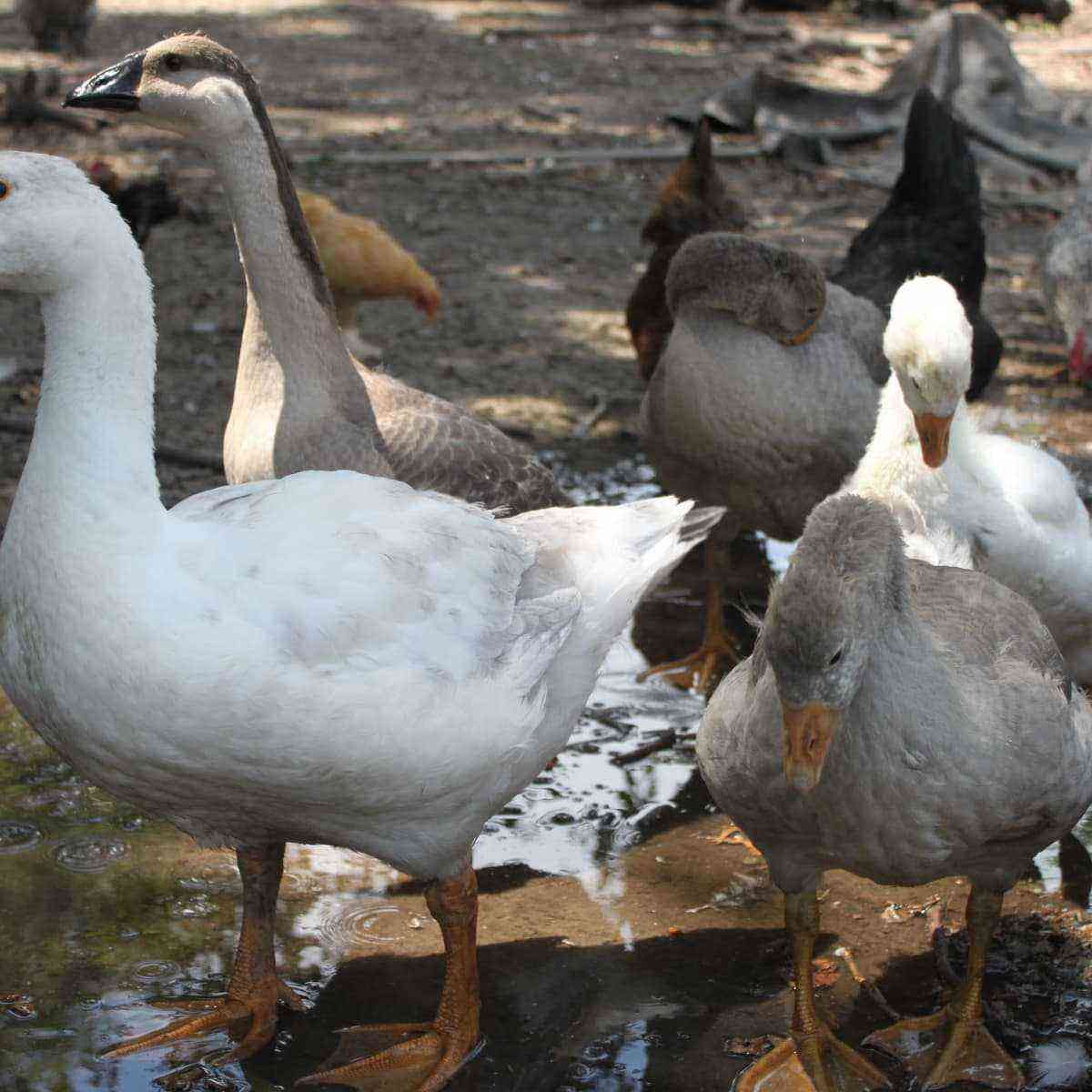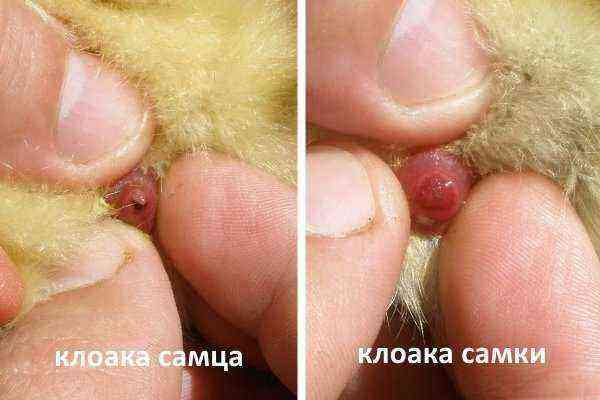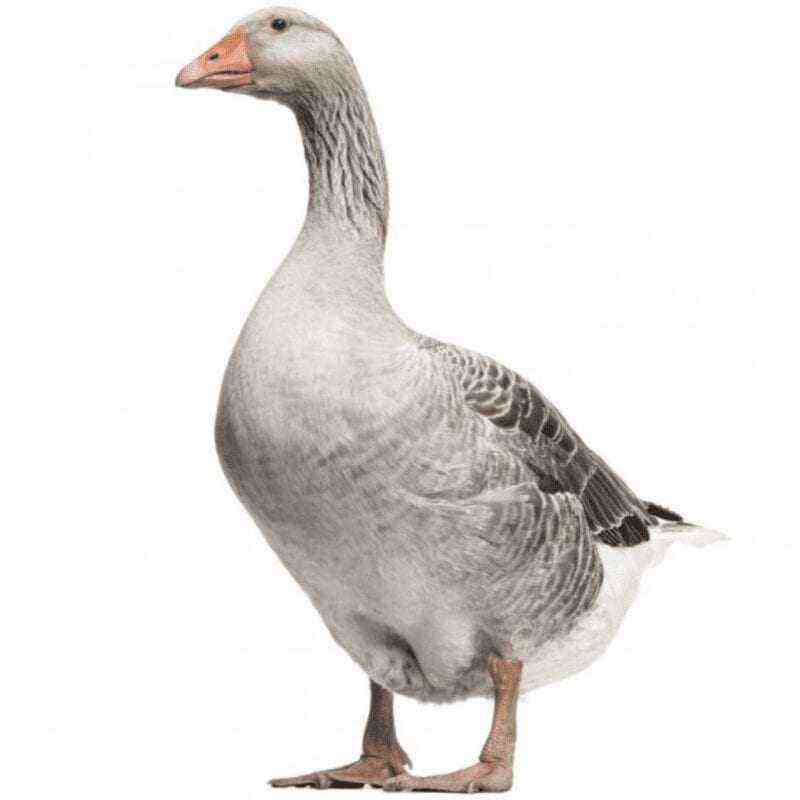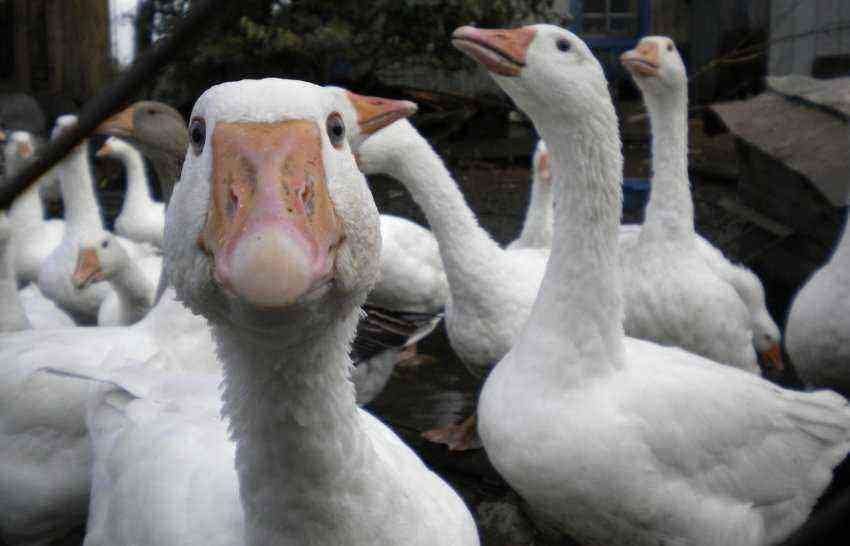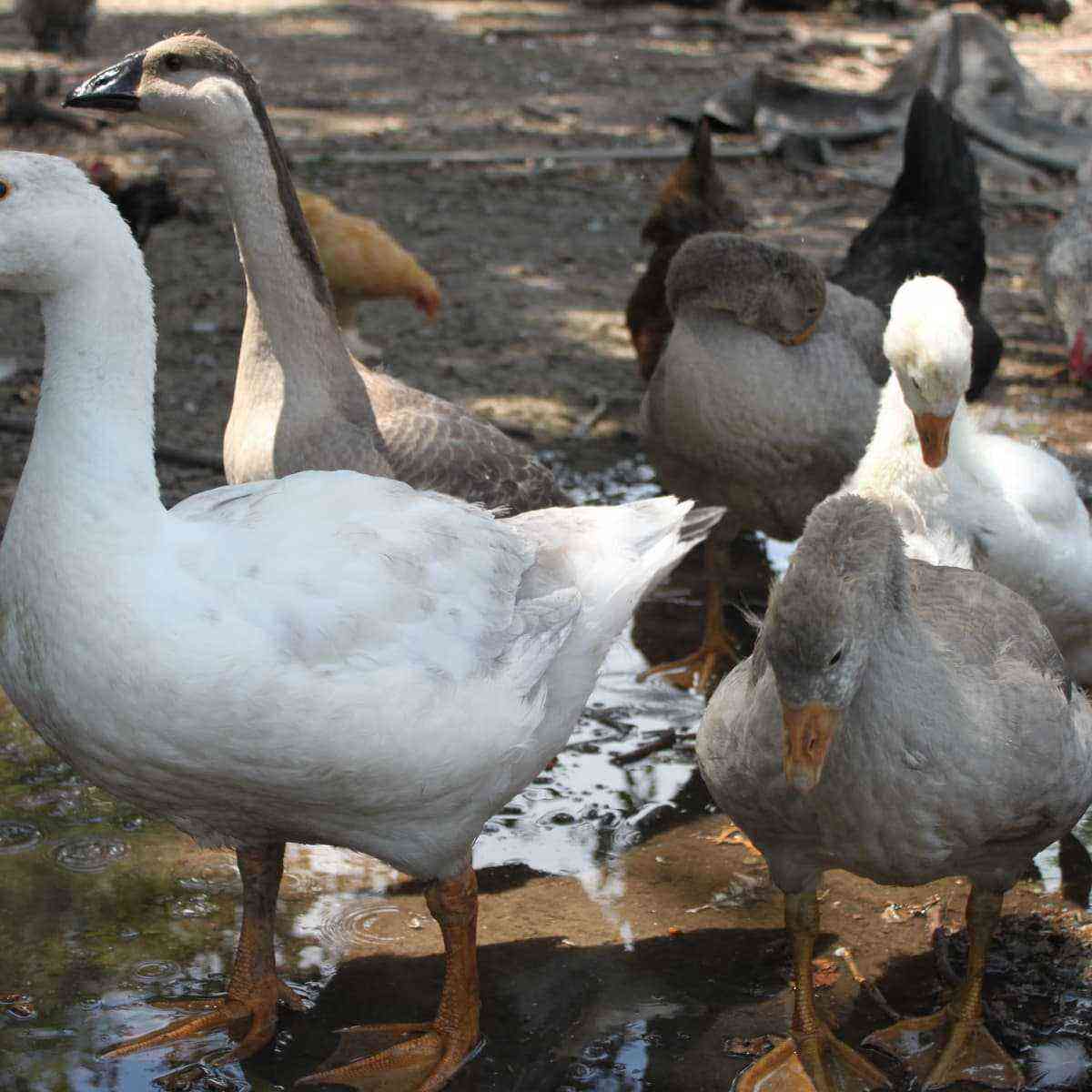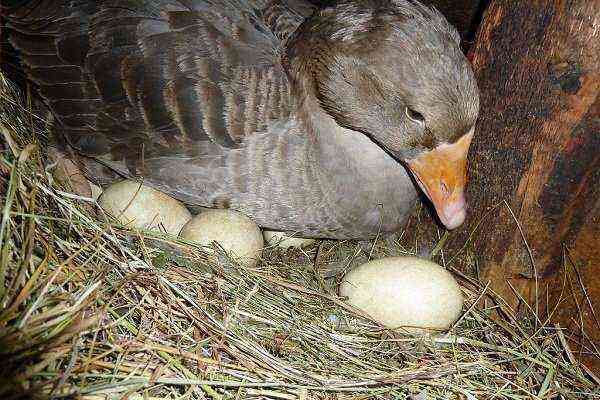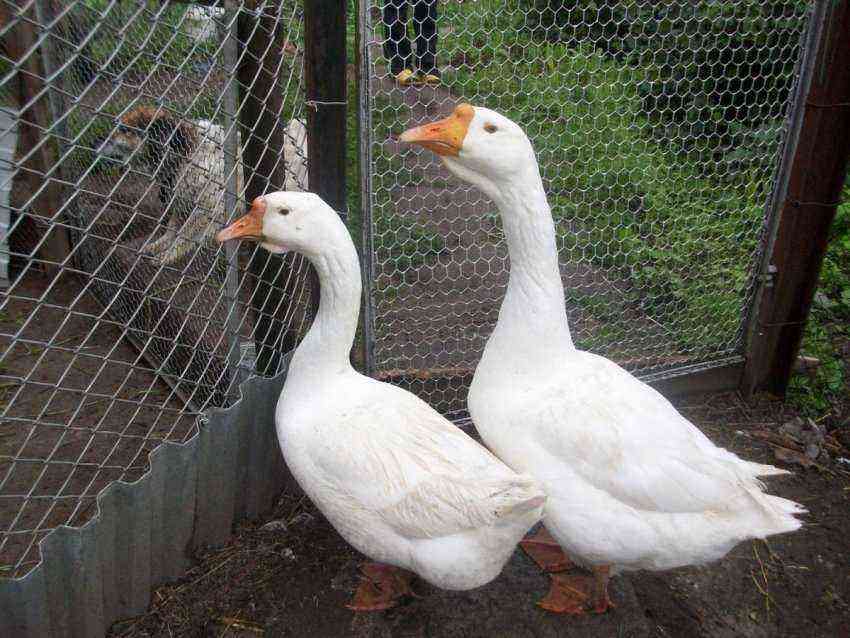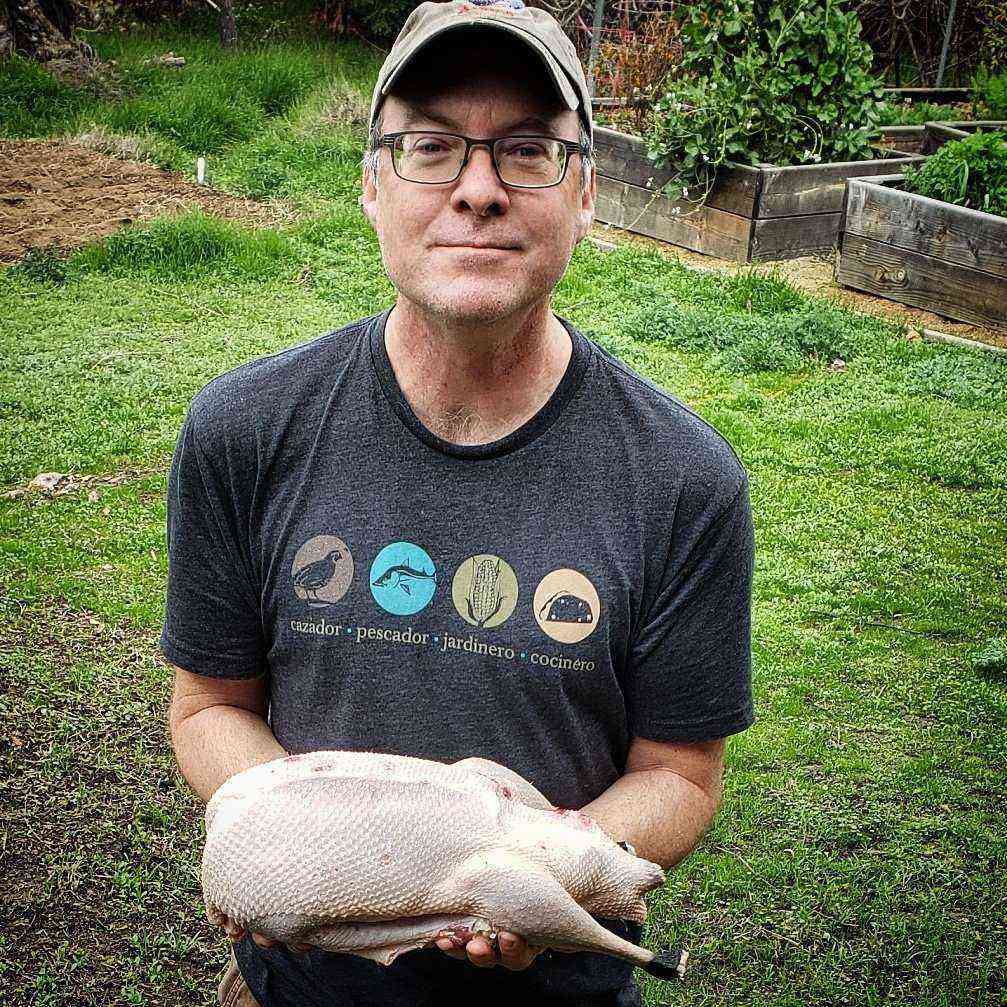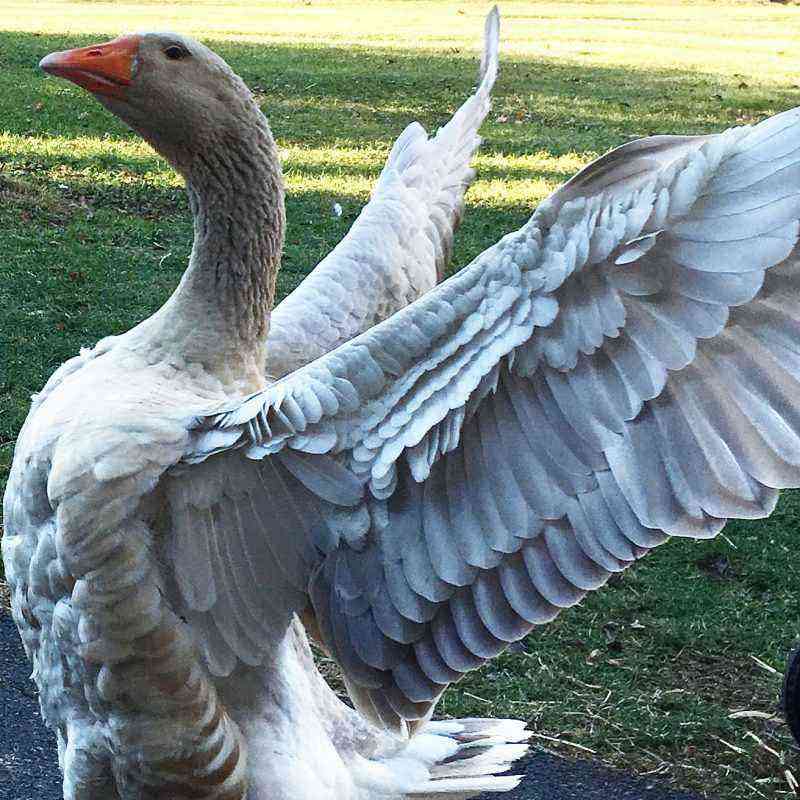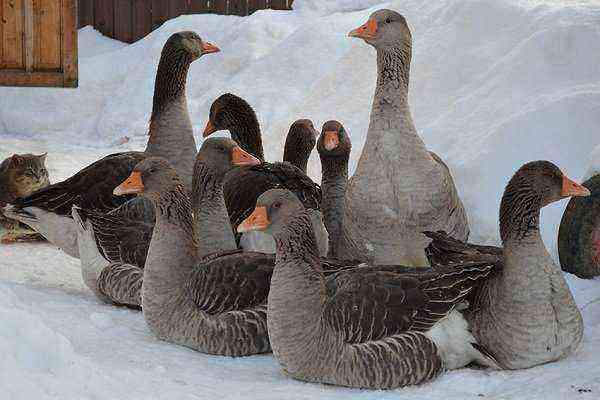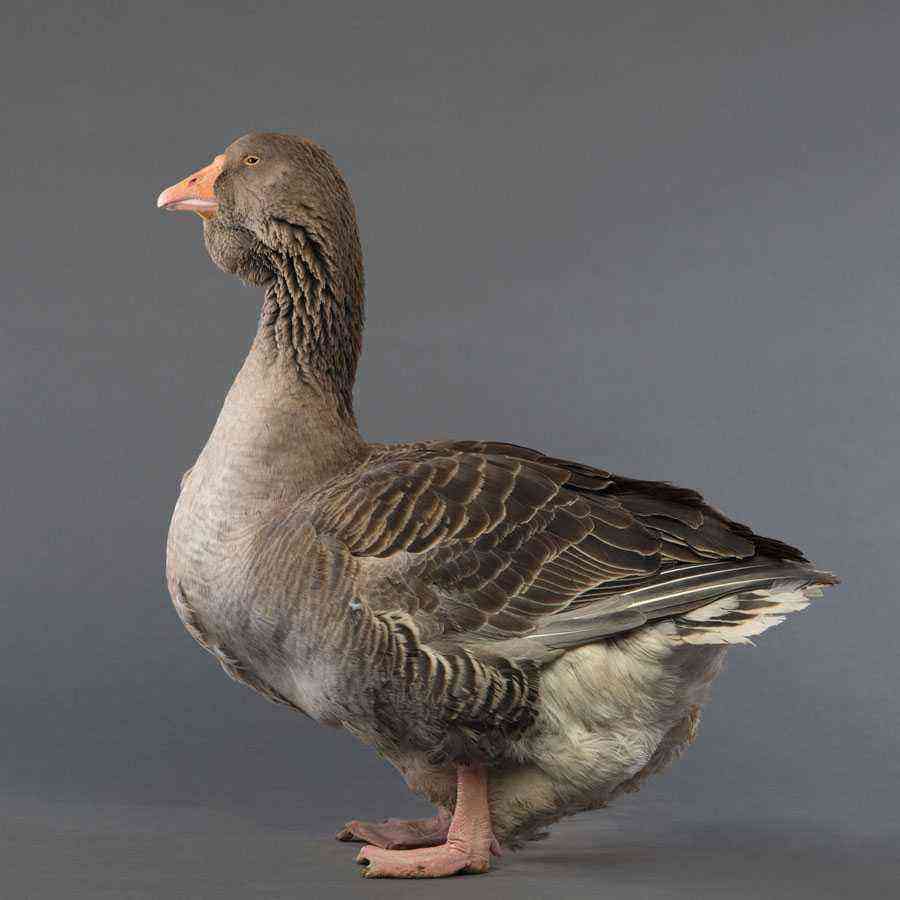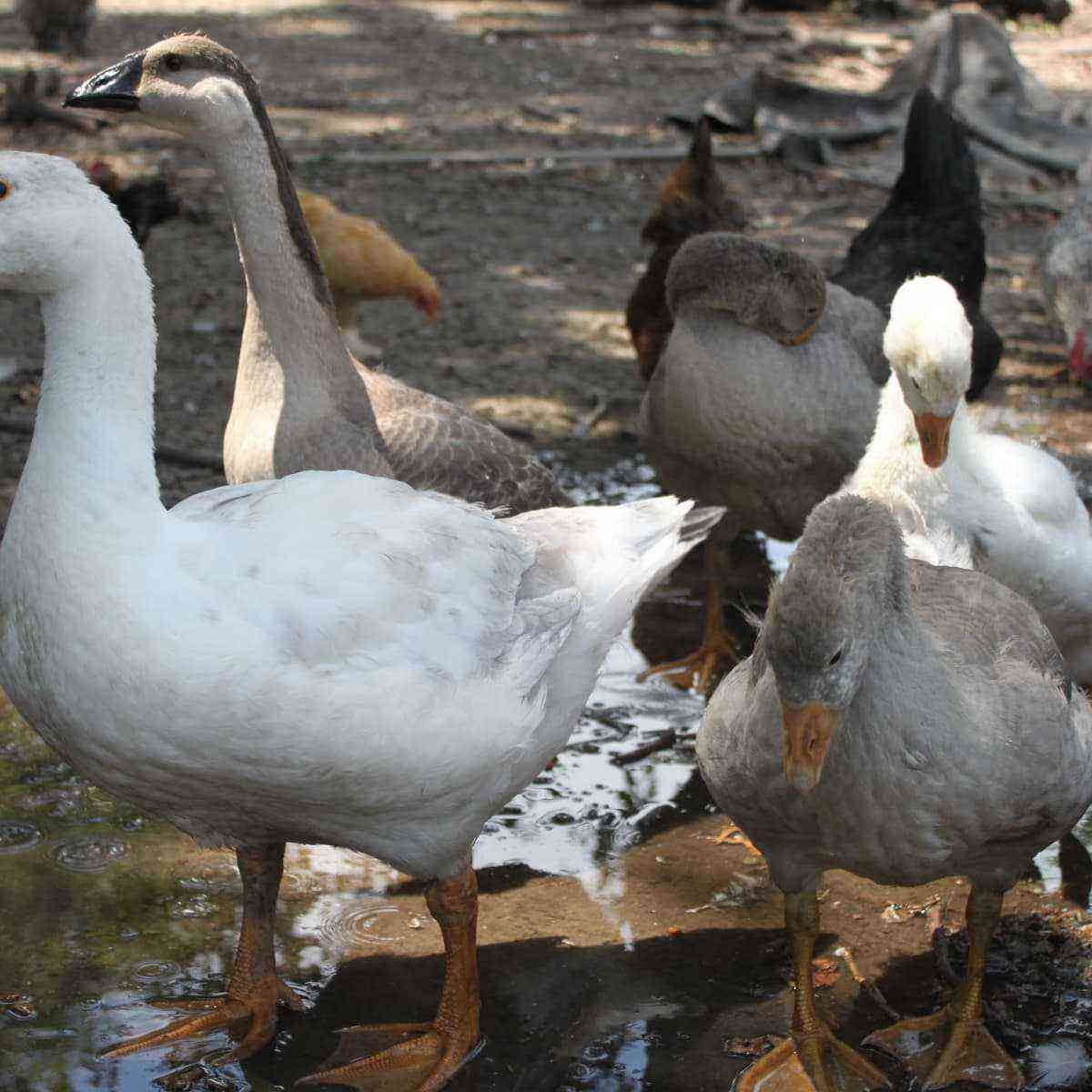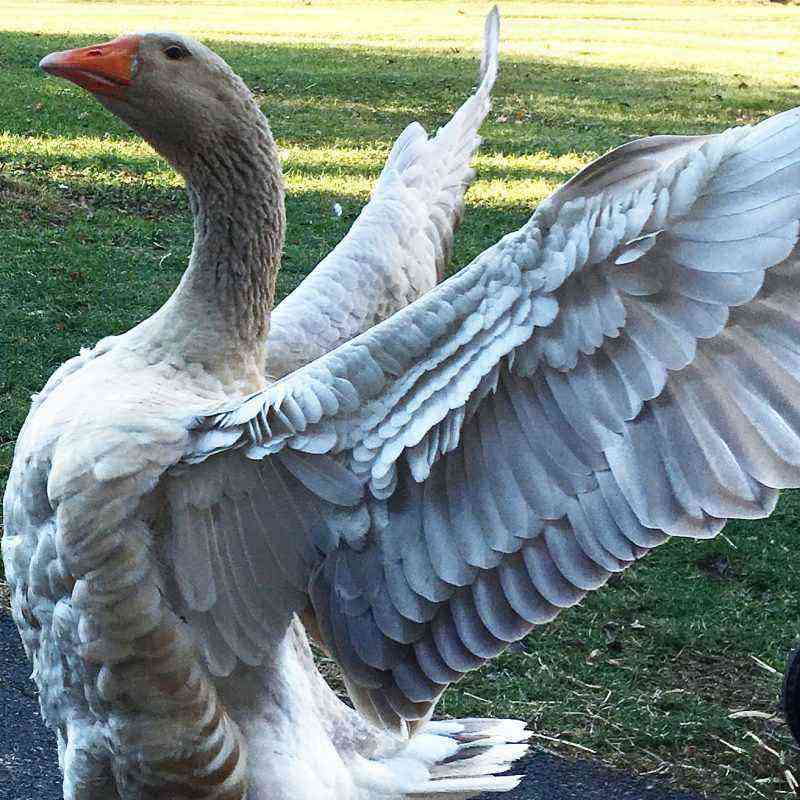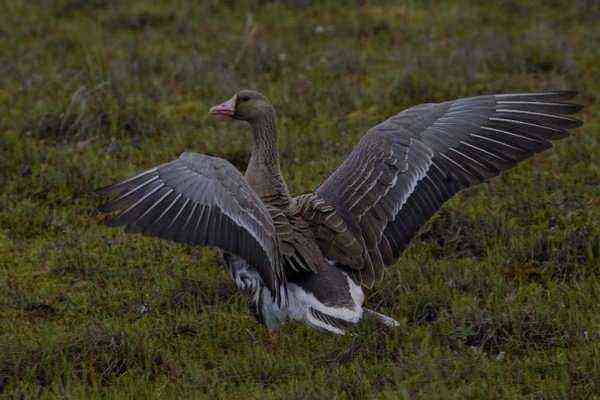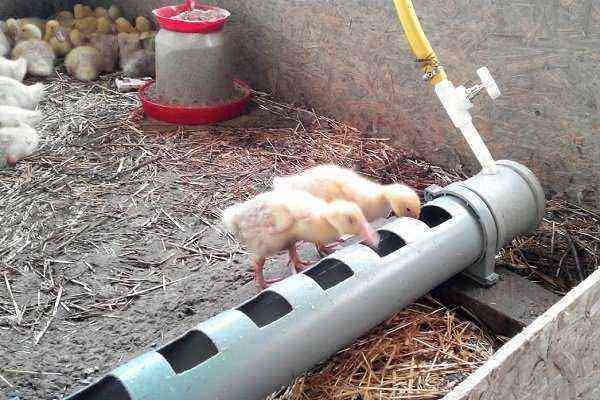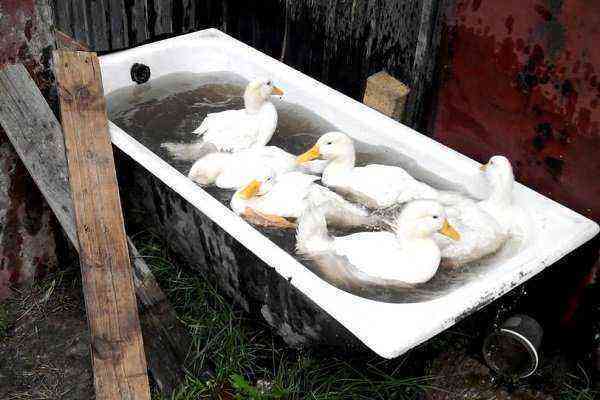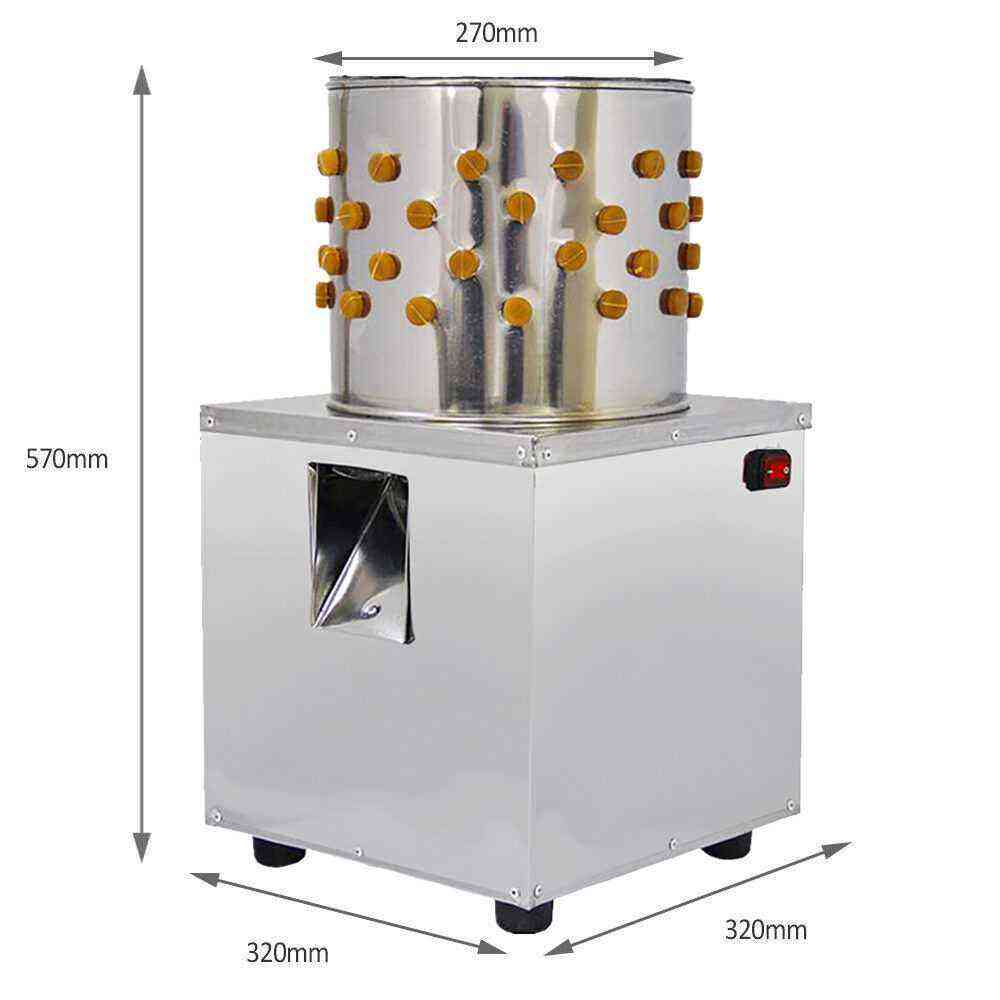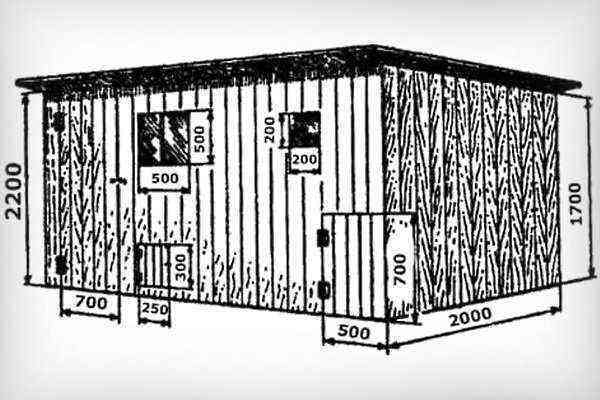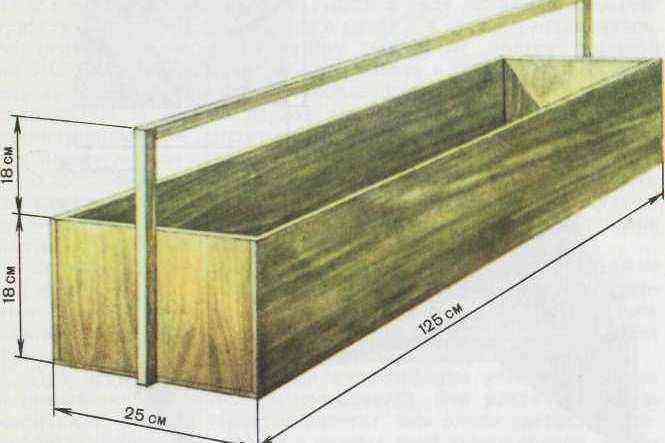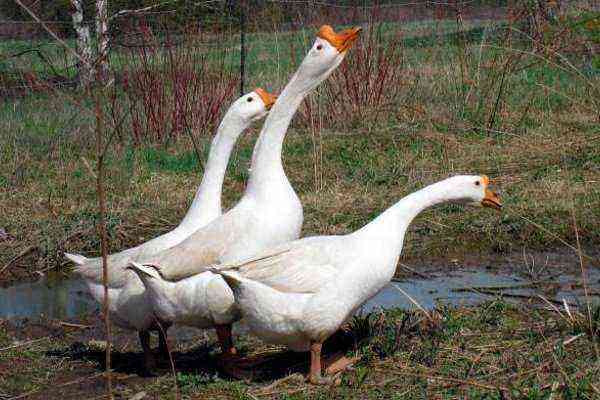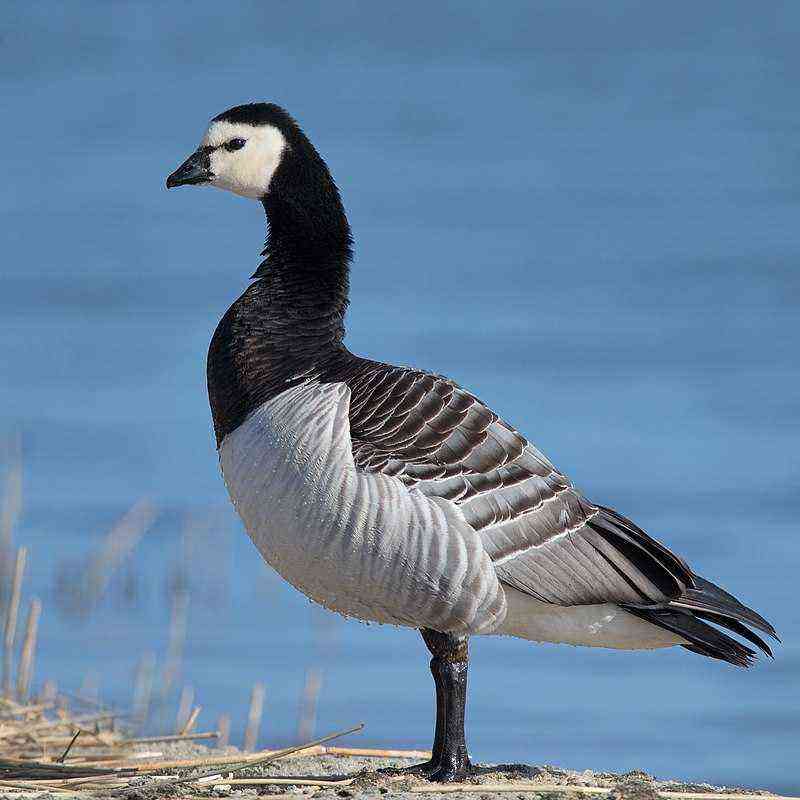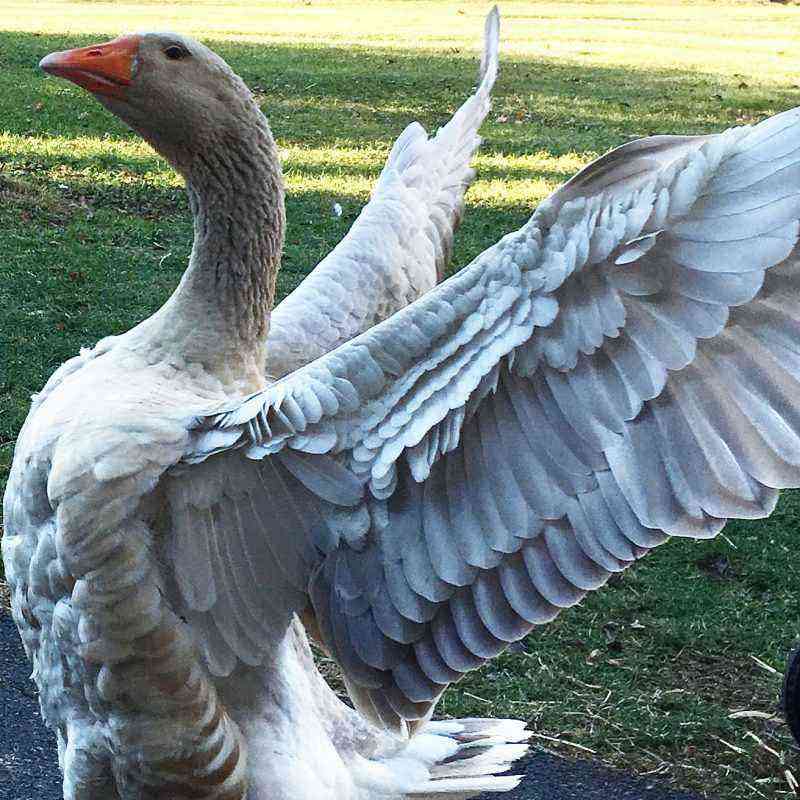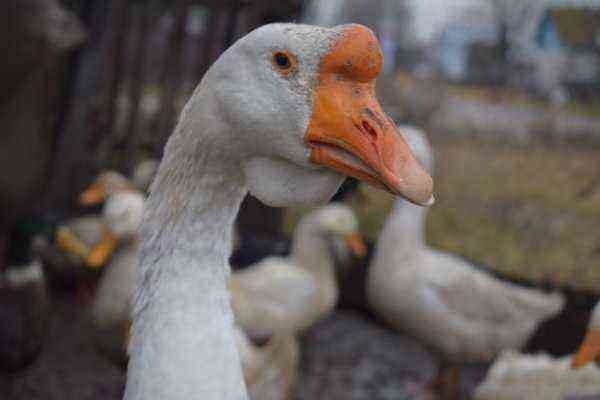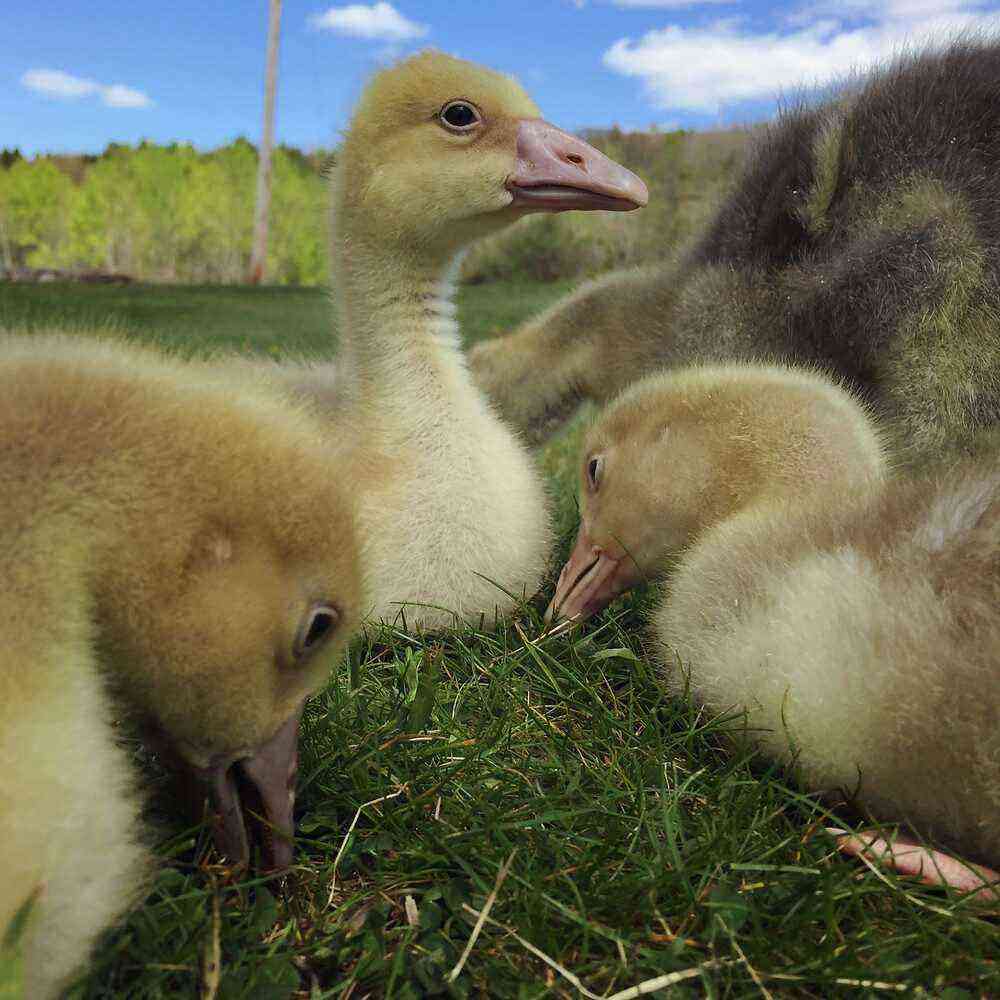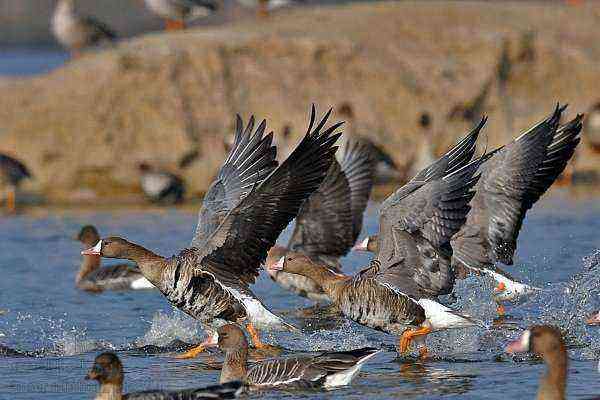The Danish Legart geese breed is only gaining popularity among poultry farmers in our country. It is distinguished by high rates in terms of quality and taste of meat, gains weight well and quickly, consumes less feed compared to other breeds. Features of keeping, feeding and breeding Danish Legart geese are discussed in this article.
History of origin
From the name itself, you can find out the country of origin of these geese – Denmark. The breed was obtained by crossing many breeds in order to obtain a bird with excellent productivity, high weight with an average build and minimal maintenance costs.
These geese came to our country not so long ago and are just beginning to spread widely.
The correct name for the breed is the Danish Legart, although they are often referred to as the Danish Legard.
Description and characteristics of the breed
The breed is considered one of the best in the world. Let’s consider its main characteristics in more detail.
Table of the main characteristics of the Danish Legart breed:
Goose Goose Egg production, eggs/year Egg weight, g Hatching instinct Egg fertility, % Survival of goslings, % Fluff yield, kg/year per individual Weight, kg Sexual maturity, days Weight, kg Sexual maturity, days 7-8 270-280 6 -7 260-270 33-40 150-200 absent 60-65 70-80 0,3-0,5
Appearance
The appearance of an adult bird can be described:
- plumage – snow-white, without inclusions;
- the body is more square in males, in females it is elongated, landing is deep;
- the back is straight and wide;
- abdomen – has a shallow fat fold;
- legs – yellow to orange, metatarsus – long;
- neck – not very long, thick, with a bend;
- head – small, oblong;
- the beak is yellow-orange, small, has a white bulge at the end;
- eyes – a feature of the breed is the blue color of the eyes;
- bones – not wide, graceful.
Appearance of goslings:
- the first brood has a yellow down cover with dark patches;
- subsequent generations – have a yellow pubescence without inclusions;
- after the first molt, the cover of both broods acquires a snow-white color without inclusions.
Character
The nature of the birds can be described:
- peaceful, calm and balanced birds;
- not aggressive, do not attack other residents of the poultry yard, strangers, children, do not arrange fights among themselves;
- get used to the owner in a short time, respond to commands;
- don’t make noise.
Can reveal discontent during the nesting period.
Laying period and average annual egg production
On average, puberty occurs in 270 days. In females, this process takes place several weeks earlier than males. During this period, they begin to lay eggs.
Annual productivity is up to 40 eggs weighing 200 g each, which is considered a high indicator. But at the same time, their fertility is no more than 65%.
About goose oviposition in more detail, you can read separately in our other article.
Individual weight and meat productivity
Basically, the breed is bred for meat. In adulthood, the male reaches a weight of 8 kg, the female – 7 kg.
The bird is early. According to the declared characteristics, the chicks weigh about 6 kg already at 8-10 weeks. And a month later – 7 kg.
The owners of the Danish Legart breed consider such figures to be somewhat exaggerated, according to them, a weight of 5 kg can be expected by 4-5 months from birth.
Accelerated weight gain by geese by 2-4 months, poultry farmers refer to an advertising move.
Goose meat is considered dietary. It is tender and has a small percentage of connective tissue, so it is well absorbed. Fat deposits do not affect the quality, as they are located under the skin.
The tasty, fatty liver of these geese is highly valued, which, with good feeding, can reach a weight of 500 g or more.
Down productivity
Geese Danish Legart are distinguished by high rates of fluff quality. You can start plucking it from the 11th month of a bird’s life.
Regular plucking is carried out every 6 weeks. For a year, up to 0,5 kg of fluff can be obtained from one bird.
Features of the content
Danish Legart geese are unpretentious in their care, they grow quickly, without causing trouble to the poultry farmer. It is important to observe only a few important nuances.
Requirements for the room
Geese are heat-loving birds. When arranging a poultry house, it is necessary to exclude the appearance of any drafts and the ingress of natural precipitation. In the cold season, the floor and walls are insulated, for example, with wood materials.
The goose house is built on a hill, preferably next to the walking yard and access to the reservoir.
The poultry house must be equipped with:
- thick walls. Their thickness is at least 20-25 cm. Brick, foam blocks, cinder blocks, wood are suitable as a material. The height of the walls is 2 m.
- roof. Make it from tiles, slate or roofing material. The constructed attic will serve as additional thermal insulation, both in summer and in winter.
- Polom. Make it out of wood, concrete, or leave it earthen.
- Zone separator. Create 2 zones in total:
- for adults;
- for the young.
Each zone should have a separate place for eating and sleeping at night.
- nests. Install them at the rate of 1 nest for 2 geese in the shaded part, away from the entrance, preferably on the south side.
- feeders. Installed in a poultry house. You can equip a separate “room” for eating.
- drinkers. Should always be freely available.
- Litter. Straw, sawdust, sand, dry grass, peat are suitable in its quality. The layer thickness is at least 10 cm.
- ventilation. Good ventilation is required. Ridge ventilation is considered the best option.
- windows. Which should occupy up to 20% of the walls of the goose house. Be sure to warm them up for the winter.
- Additional lighting. It is necessary during the breeding season to extend daylight hours to 14 hours. Install 1 lamp at 60 W on an area of 6 square meters. m.
The goose house must support:
- Area for 1 individual. Geese do not like crowding, one bird needs 1 square. m area. In extreme cases, you can keep 2 individuals per 1 square. m. Tightness provokes a decrease in weight and egg production, a deterioration in the quality of fluff.
- Temperature regime. The optimum temperature will be 22-26 ° C.
Install additional heating if the geese are cold in winter.
- Humidity. 50-60%.
Yard for walking
You can not keep the bird locked up all the time. She needs a walk.
For these purposes, a corral is equipped:
- Space. Should be sufficient for the free movement of geese. The ideal option is 10 sq. m per person. The best place would be the south side of the poultry house.
- Fencing. Use mesh or build a wooden fence.
- Canopy. Install the canopy in a place protected from the wind, where geese, especially young ones, can hide from the sun and precipitation.
- Coating. Geese love to graze, so plant the walking yard with herbs. It will also be useful to eat green cereals.
In winter, before releasing the geese into the yard, you need to clear it of snow.
If it is impossible to provide free range on the farm, take the herd to the meadow for grazing for the whole day.
In summer, geese can be outdoors around the clock, subject to the arrangement of a canopy.
Access to water
Geese are water birds, they need access to water, whether it is an artificial reservoir in a walking yard or a river / pond in a meadow.
According to scientists, the lack of water does not reduce either egg production or weight gain. But, the importance of free access to water lies in the fact that it is a natural environment for mating.
The fertility of eggs increases with the possibility of mating in water bodies.
Feeders and drinkers
The number of feeders is calculated: 1 pc. for 10 geese or 15 cm of the sidewall for 1 individual.
There should be 3 containers:
- For wet mixes. It can be made of metal.
- For dry food. You can use plywood boxes.
- For mineral supplements.
Dairy products should not be given in metal containers.
Drinkers are installed at the rate of – 1 pc. 2 m long for 10 heads. You can use a plastic pipe with a cut top. Change the water in them up to 3 times a day. In winter, add warm water and keep it from freezing.
Disease Prevention
Preventive measures for common diseases of geese include compliance with the rules of care:
- Hypothermia and overheating. In summer, the temperature in the poultry house should not be allowed to rise above 30 ° C, and in winter below 0 ° C.
- Humidity in the room. With low humidity in geese, mucous membranes, eyes, and feathers can dry out. With elevated rates, the risk of developing fungal and bacterial diseases increases.
- Disinfection. After completion of the construction, treat the walls and floor with lime. Further, once a month, disinfect with a solution of lime, formalin or copper sulfate. After the procedure, ventilate the house for 1 hours.
- Regular cleaning and bedding change. If this rule is not observed, the probability of parasitic invasions is high.
- Cleanliness of feeders and drinkers. Wash feeders and drinkers regularly. Timely change the water, uneaten food, especially wet, – throw it away.
- Fresh air. In the absence of ventilation in the goose house, there is a risk of developing fungal plaque on the walls.
- Protection against overheating in the sun. Both adults and goslings do not feel well in direct sunlight.
- Vaccinations. To save the livestock of geese, without fail, they are given the necessary vaccinations.
Danish Legart geese are difficult to treat, sometimes it is not possible to do this, so compliance with preventive measures is mandatory.
Weakened young animals are recommended to nurse:
- Milk yolk mixture. Chicken yolk is diluted in 0,5 cups of fresh, fat milk. Sugar, biomycin or penicillin are added to the mixture. Helps with depletion of the body. Feed until you recover.
- Maintaining the room temperature. It should be at the level of +23 ° С.
- Mocion. In sunny, calm weather, let them go for walks for 10 minutes.
You can read more about goose diseases, their varieties and features here.
Feeding
The diet will depend on the age of the bird and the time of year.
In summer and winter
In summer, while grazing, geese consume up to 1-2 kg of fresh grass per day, so they do not need intensive feeding at home. In the evening they can be offered grain feed.
In winter, you should take care of high-quality nutrition, which should consist of:
- Forbs hay. Alfalfa, clover, wheatgrass.
- Vegetables. Beets and carrots – to maintain a normal weight. Jerusalem artichoke – to increase immunity and frost resistance.
- Cereals. Keep in mind that the diet cannot consist exclusively of grains. Their percentage is 30-40.
- Mineral and vitamin supplements. Chalk, sand, fine gravel, shell rock, salt are given as mineral supplements. In order to prevent the development of beriberi, up to 20 g per day of yeast feed is added.
You can also include in your diet:
- bran;
- dry mixed fodder with mountain ash, viburnum, wild rose, hawthorn;
- foliage and thin branches of birch, aspen, linden, acorns, needles, aquatic plants;
- earthworms, which can be grown in containers with manure and kept in the basement in containers with earth.
Feed the bird at least 3 times a day. The evening dose is increased several times. Supplement the evening meal with a high-fiber food (bran, grass meal).
The need for clean water is determined by the formula – for 1 kg of dry food – 4 liters of water per individual.
Table of the required amount of feed for 1 bird for the winter period:
Name of feed Consumption, kg Hay 20 Beetroot 30 Carrot 30 Jerusalem artichoke 30
Adult birds and young
Depending on the age of the bird, the change in diet is indicated in the table.
Geese diet table depending on age:
Возраст, дней
Сухой корм, г/сутки
Зелёные корма, г/сутки
1-6
15
25
7-20
40
90
21-30
100
180
31-40
120
260
41-50
140
350
50 и взрослые
160
500
Breeding
Since ganders mature more slowly than geese, in the case of the first laying of eggs by birds of the same age category, it is better to remove it in order to provoke females to lay eggs again.
Females begin to rush in April.
If the flock consists of young geese and an old goose, the eggs will be fertilized from the first clutch.
The females of the Danish Legart have no incubation instinct, so goslings need to be hatched in an incubator.
While you collect the required amount, store fresh eggs following these recommendations:
- the temperature should be 10-15 ° C;
- lay the eggs on their side;
- you can store an egg for incubation for no longer than 1 week, then the chances of successful hatching of goslings decrease;
- on the 5th day of storage, turn the eggs over to the other side, so there is a better chance of preserving the embryo.
Criteria for selecting eggs for incubation:
- size – large or medium;
- clean;
- the surface is smooth, without growths, without cracks;
- when checking on an ovoscope, the yolk spot is clearly visible, it is evenly located in the center, when turning it returns to its place, there are no inclusions in the protein.
Temperature and humidity in the incubator
After laying the eggs in the incubator, set the temperature at +38,0 … +38,5 ° C, humidity 80%. Next, change the indicators in accordance with the data in the table.
Table of temperature and humidity in the incubator by day:
Период, сутки
Температура, °С
Влажность, %
Охлаждение, раз/сутки
1
38,0-38,5
80
–
2-8
37,5-38,0
65
1
9-29
37,0-37,5
65
2 по 15-30 мин.
29-31
37,0-37,5
80
–
Incubation and hatching of eggs
The process and sequence of egg incubation:
- lay the eggs in the incubator on their side;
- for the first 7 days, turn the eggs daily 5 times a day;
- in the first 7 days, spray the eggs;
- from 7 to 14 days in spraying, take a break;
- from the second week, turn the eggs over at regular intervals 3 times a day;
- on day 10, make the first culling of eggs by checking them with an ovoscope;
- from the 15th day, start spraying the eggs again;
- 21 days cull again;
- from day 26, stop turning eggs;
- 28 day:
- remove the eggs from the incubator for ventilation and sprinkle them with a solution of potassium permanganate;
- moisten the eggs every 6 hours or cover them with a damp cloth;
- lay the cloth in the incubator so that the chicks do not hurt their legs when they hatch;
- open the vents on the lid of the incubator.
- Day 29 – most often during this period, chicks begin to hatch.
The hatchability of goslings, subject to all the rules, is 80%.
The exact time of hatching is impossible to predict. This usually happens between 28 and 31 days.
Care of young animals
Caring for young animals is to maintain cleanliness and rational feeding.
The room where the goslings are located should always be clean, the feeders and drinkers should be washed and disinfected, fresh water should be freely available.
Food should not be left for later, always cook it before use and discard leftovers.
At the age of 3 weeks, goslings are released for the first paddock. To do this, allocate a special area, taking care of their safety.
At this time, they stop feeding the chicks so that they themselves learn to eat greens. When they begin to receive most of the diet from plants on the range, you can again introduce top dressing from crushed grain or compound feed.
Feeding goslings depending on age:
- First days. After hatching and drying, the chicks are immediately offered food. This contributes to the removal of the yolk from the body, as a result of which the chicks grow faster and the risk of mortality is reduced.
The diet consists of:- boiled eggs, previously finely chopped;
- ground grain;
- corn groats;
- fresh herbs, which should be 50% of the total diet.
Goslings are fed every 3-4 hours (about 8 hours a day). Feed is given in a pallet or on a plywood sheet.Dairy products are not offered on the first day.
- Up to 14 days. The first 7 days are fed 6 times a day:
- portions increase by 30%;
- remove eggs from the diet, replace them with high-calorie protein feeds;
- peas are introduced into the menu (it is soaked overnight and ground through a meat grinder), bone meal, animal feed, fish oil (as a vitamin supplement).
- 15-30 day. Chicks eat 3 times a day:
- greens, peas, grains become the basis of the menu;
- introduce boiled beets, carrots, potatoes into the diet;
- no more than 2 times a day you can give fresh wet mixers;
- monitor the gluten of food so that it does not clog the nasal passages of goslings;
- fresh vegetables and root crops are mixed with chalk or shell rock;
- you can give some cottage cheese.
At night, there should be food in the feeders.
- After 1 month. Chicks receive food 3 times a day:
- the basis of the diet is green fodder;
- in the absence of the possibility of walking, goslings are given fresh mowed grass;
- in addition, grain, peas, mash, cake, bran, shell rock, chalk, salt should be fed.
You can get detailed information about feeding chicks by reading our article “How to feed goslings from birth?”
Advantages and disadvantages of the breed
The main advantages include:
- 20% less food intake by the Danish Legart than other breeds;
- the main diet is 90% pastured grass;
- with insufficient amount of grass on grazing, geese consume cut grass from the garden plot, cleaning vegetables, which significantly saves purchased feed;
- accelerated weight gain;
- meat yield is greater than that of other breeds;
- carcasses have an attractive presentation;
- can be an aesthetic decoration of the yard.
The disadvantages include:
- low fertility of eggs;
- relatively low survival rate of goslings;
- low egg productivity;
- no maternal instinct;
- high cost of breeding material and hatching eggs.
Where to buy?
On the territory of Russia, you can buy Danish Legart geese:
- Ptica Village (Bird Village) suburb of Pereslavl-Zalessky;
- Vip Farm, Moscow region, Mytishchi;
- Peasant farm Simbireva Iraida Innokentievna, Moscow region, p. Ivashkovo, Shakhovsky district;
- Kireevskaya hatchery and poultry station, Tula region, Kireevsk.
Approximate prices:
- daily goslings – 250 rubles;
- weekly goslings – 400 rubles;
- adult geese – 3000 rubles;
- hatching eggs – 70 rubles.
Reviews
Michael, 55 years old. I have been keeping geese Children’s Legart for several years. The breed is unpretentious in care and nutrition, quickly gaining weight. They are calm, do not scream or fight. It’s a pleasure to keep them. Andrey, 45 years old. The breed is relatively new. We keep it for several years. In general, we are completely satisfied. Goslings survive well, grow quickly, they can be cut for meat at 4 months, or you can leave them to get eggs, which are not very many, but enough for us. At the same time, they are not demanding in food and are not fussy. Ivan, 48 years old. The Danish Legart is bred for meat and eggs. There are not very many eggs, but we have enough. From my own experience I can say that this breed is more profitable to keep than many others. Therefore, I definitely recommend it.
The Danish Legart geese are unpretentious in care and feeding, they know how to be docile, by the age of 4 months they gain enough weight for slaughter, their eggs and snow-white fluff are highly valued. Geese do not have a maternal instinct, so an incubator is needed for breeding. The breed is excellent for growing in private farms.

